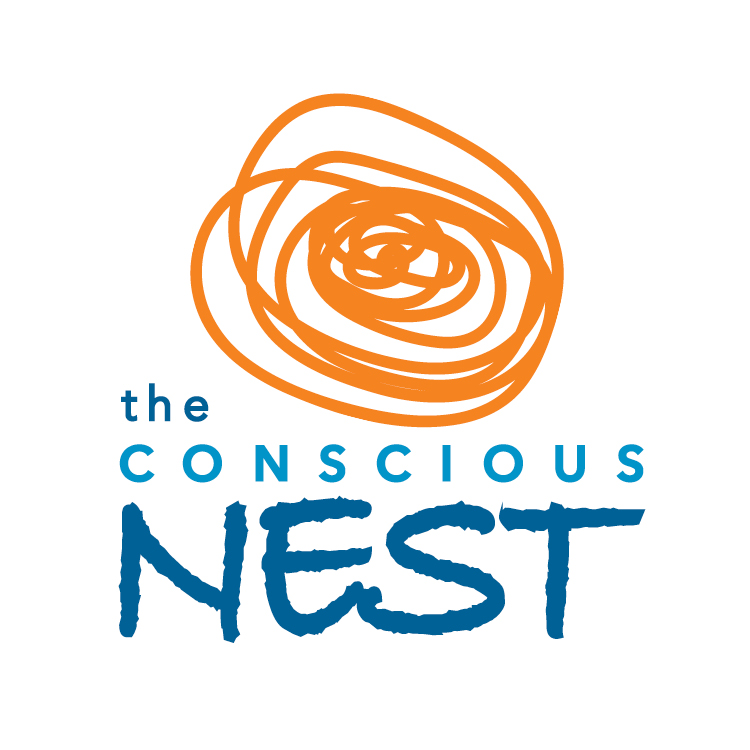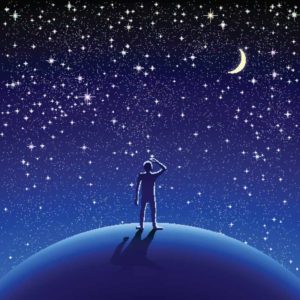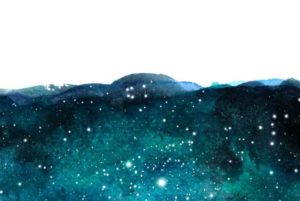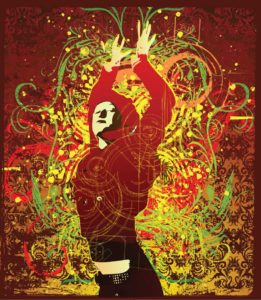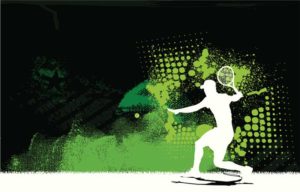I have recently relocated to Miami, Florida, and have found myself living in a house overlooking Biscayne Bay. To the left of our house, the mainland recedes, then arcs around, hugging the bay, and crests into the distance. The predominantly green, lush gardens of Coconut Grove, punctuated by houses peeping through the foliage, and motor boats and other sea-faring vessels hovering above in the water’s edge in the safety of their boat-dock elevators, gives way to the vertical village of Coconut Grove town centre, and then the solace of the local marina. Here, a little island of green affronts the eye, almost perfectly concealing perhaps a hundred tiny white sticks, standing at attention, and reaching up out of the tangle of trees. Even though I am an island girl, it took me a moment to realize that these were the masts of the boats safely moored in the watery parking lot between mainland and mangrove. Further in the distance, downtown Miami rises and falls, as if wishing to expand into the grandeur of some of it’s sprawling Northern neighbors. When driving through downtown Miami, my four year old son gasps at the buildings and declares that ‘it is just like New York’. The sweet angel has never set foot in the Big Apple, and probably paints a picture of the megalopolis in his mind, based on photos of his parents’ travels there, and two pages in one of his favorite books, where a world-travelling bear called Mouk, ventures to Manhattan. Back in my present geographical reality, the small patch of sun-kissed high-rise buildings surrenders to the water, and the impressive cranes of the cargo docks sit like exotic fauna on the horizon. The Rickenbacker Causeway arches elegantly to join the mainland to the islands of Virginia Key and Key Biscayne, and provide the flatter than the proverbial pancake landscape with it’s highest point of altitude. The hotels of Key Biscayne tower over the remnants of the island’s original vegetation, like oversized Monopoly real estate building pieces. A communication tower stands tall, like an upright needle, with a flashing eye, above the natural reserve to the south of the island. And then it stops. The buzzing and whirring, coming and going, upping and downing, moving and shaking, stopping and going, chatting and shouting land mass falls abruptly into the ocean. And then, open waters. A few stilt houses dot the horizon and make me think of ‘daddy long legs’ spiders, gingerly walking on the surface of the water. But it is their presence, and their minuscule size, that allows the viewer, who has taken in all the variety of the aforementioned panorama, to then fall back into himself, inhale, soften in the occiput, give permission for his head to tilt backward, his eyes to relax into their peripheral vision, his face to open to the gifts which normally rain down only on his vertex and all of his senses to expand their powers of perception in contemplation of the sky. In contemplation of space.
On a clear day, it would appear that there is no thing up there. It is as if that immortal celestial painter, during his rather short working period of dusk ’til dawn, has successfully completed yet another commission to create a perfect blue canvas. An adventure into blue bliss which has certainly inspired many an avant garde monochromatic painter. An infinitely large canvas which stretches across the sky , from horizon to horizon, and graciously arches up above to allow the birds and clouds to traverse the space beneath it. Here, it is easy to sympathize with our ancestors who held close to their hearts the belief that the world was indeed flat. Yet, the longer one gives oneself to this vision of expanse of sky, one becomes aware of a softening – both physically and energetically. The muscles of the body relax, as does the tension between the eyes where we hold on to our concept of ‘I’. This release is felt even more so if one is able to lay the body on the ground while looking up at the blue mirage. The canvas is but a mirage. We all know that, should we be able to escape the embrace of gravity, we would dive through the blue and find ourselves in the expanse of black which we call outer space.
When we lived in more Northern latitudes, my children would revel in the shortening periods of daylight, as they signaled the arrival of the gift of star viewing before bed and upon wakening. In the long summer days, the blue canvas would kiss them good night and beckon them out of peaceful sleep in the morning. But as the mercury dropped, and the mountains seemed to brace against the winter winds, and the valley deepened in lengthening shadows, two little people would stand, faces pressed against the quadruple-glazed glass, their eyes lit up in search of the first evening star. And as the final page turned on their bedtime story, they would race to take in the wondrous sight of a blanket of darkness on which a kind gambling hand had strewn the treasure of a seeming infinity of jewels. If you look up at the night sky with the innocence and wonder of a small child, it can take your breath away; but only for a rapturous instant, a tease of fleeting eternity, before it feeds it back to you again, filling your body with the sweetest nourishing whisper of life. Filling your spirit with desire. Rekindling your memory, your knowing, that you are not alone, here, imprisoned in your body and contracted to service on this planet, in this space-time reality. With the open-beingness of a small child, the space-time continuum dissolves, and you can reach out and touch that star, whether it still exists or not, in the deepest recesses of space, and you can know that in doing so, you are holding your own hand.
But perhaps I caught that last wave on my own.
I will go back to the word ‘space’. We often conceptualize space as nothing, or no thing, and indeed unconsciously ignore it on a day to day basis. On a very basic level, as a species, we are wired to notice ‘things’, whether static or in motion, primarily to determine if they are suitable for consumption, or if they pose any mortal danger. Hence, space becomes irrelevant. It is like an invisible soup which we move through, in order to get to the next ‘thing’. On the contrary, space is ubiquitous. It is everywhere. You just cannot get away from it! Not only is it all around you, but it is inside you too. Biology 101 – space creeps into your body, which is filled with various ‘empty’ cavities, which are essential for it’s functioning. I was not so into Biology when I was a teenager. Perhaps it was something to do with that Christian upbringing in which the body is seen as something a bit dirty, and best to be avoided, except your own, which must be tolerated, until you can be relived of it, and upgrade to a lighter, aerodynamic, winged model. I was a fan of Physics. I remember how it blew my mind, and pretty much made me giggle to myself, to contemplate that every atom was an unfathomable 99.999999999999% space, much like our solar system. So in our search to get down to the nitty gritty, building block reality of our much valued ‘things’, we poke and prod, and cut and dissect, and magnify and microscope and gamma and x-ray ‘spectrocopeify’, and build altars to the Particle Physics Gods, like the laboratory at CERN. And if you were a fly on the wall of the particle collider at CERN, what do you think you would be looking at? A whole lot of space! When we look deeper and deeper inside of our particles, we find space, and when we look out into the Universe, we find space. Funny, huh? When I was an innocent secondary school student, sat at the feet of the revered Reverend teacher of Religious studies, the words used to describe the International Man of Mystery, a.k.a. God, were omnipresent, omniscient, and omnipotent. Hard for the human mind to conceive of, far less relate to in a chummy way, anything that is everywhere at once, all knowing, and all powerful. When I learned about the simple fact of all pervasive space, it seemed like the closet thing to God that I could find at the time. I neglected to share this idea with the revered Reverend, or with my mother.
When I was studying Fine Art, my eyes were trained to see space. It is impossible to draw anything slightly more complicated than a solid object of basic shape, without a keen awareness of the space surrounding it. Sitting here, I look across the balcony at a palm tree, and try to feel what it would be like to draw the organic mess of leaves. Impossible, without drawing the spaces between them. Later in my life, as a student of contemporary dance, space got a whole lot more complicated. I remember improvisation sessions, where the exercise was simply to move with a partner, observe the space created by their body, and move your body into that space. Hard to imagine if you have never engaged in such an activity. The image that comes to mind is something like a human lava lamp duet. Static space is one thing to relate to, but moving, morphing, breathing, live space, is a whole other ball game!
We use space to measure the distance between things. It becomes an instrument of separation. What if we were to turn that model on it’s head, and use space as a means to identify connection. What if we could change the way we see space? Instead of the no-thing that separates us, what if we could re-cast it as the all-thing that holds us all together? Consider your description of any ‘thing’. Inherent in the defining of the thing, is the identification of it’s border. A border is created by the end of one thing and the beginning of another thing – the end of a physical object and the beginning of the space around it. And the end of the space is the beginning of another ‘thing’. Thing, space, thing, space, thing space, thing.
As a simple exercise, sit calmly and cast your eyes around you, observing all of the ‘things’ in your field of vision. Now, starting with something stationary, and relatively near to you, allow your gaze to rest gently on it. Experiment with focussing on one particular part of the object, and then generally, on the object as a whole. Feel your relationship with the space between the object and yourself. Most likely, you relate to the space as a distance between yourself and the object. Now, gently, allow the space to become the thing that contains both you and the object, and actually draws you together.
Experiment with this – with objects at a further and further distance from you, and with objects that move through your field of vision. You experience a slight softening in your core, as you allow space to shift from being the separator, to the connector. Boundaries – delineated by your own skin and the surfaces of objects in your line of sight – seem to soften and blur. The body begins to feel bizarrely lighter and yet heavier, as if it were both contracting back to center and expanding beyond it’s physical boundaries simultaneously. The breath becomes so shallow that sometimes a thought crosses the mind, “Am I breathing at all?”. In this state, where the space is holding the singularity of you and every thing around you, and drawing you together, in opposition to the learned practice of The Separation, the heart softens. I cannot speak for effects on the organ itself, but rather a sensation of opening in the heart centre. In this state, it seems absolutely natural to access the capacity for empathy and compassion.
When I was a regular commuter on the New York City subway system, and in the midst of reading the Upanishads, I developed a practice of Tat tvam asi – young adult, art student, spiritual seeker, Manhattanite style. Tat tvam asi, is a Sanskrit phrase which may be translated as, “That thou art”, “Thou art that”, or “You are it”, and is generally used to express the relationship between the individual and the Absolute. I allowed it to be the inspiration for an exercise in empathy and compassion. Sitting, or more often standing, on the subway, and after breathing into my heart and centering myself, I would allow my focus to settle upon another commuter who had chosen to occupy the same subterranean train car space as I had for this portion of their journey. I would use my eyes, ears and nose (touching and tasting strangers on the subway is not advisable) to ground myself in their physical reality, and would call upon my alleged sixth sense to feel my way into their energy, and then take myself into a local experience of “Tat tvam asi”. What does it feel like to be that tall? To run my fingers through my grey, thinning hair? To be that sad? To hold so much tension in my shoulders? To clutch my handbag with such fear? To sleep so peacefully in the midst of all of this noise and chaos? To breathe so high up in my lungs? To bathe myself in that pungent perfume every morning? To scratch my itchy beard? To wear those really tight trousers? To push my way onto the crowded car as if my life depended on it, and without care or concern for any of the other people around me? To walk down the line of fellow human beings, begging them for money? To have my spine so bent over by life that I can no longer comfortably stand upright and look straight ahead of me? To be so full with new life, that the weight of my own body becomes almost unbearable? New York City is a rainbow of humanity, and provided many an opportunity for me to soften, and contemplate the other, and the sensation of transforming my ‘I’ into another point consciousness, also known to itself as ‘I’.
Perhaps, as a logical next step to the ‘space as unifier’ experiment, when you have become familiar with the sensations which arise in your body and energy as you soften into the space between yourself and doorknobs, deck chairs, inviting house plants, or cranes on the horizon, you may begin to turn your attention to living things. See and feel your pet as if for the first time. Really sit with your partner and observe him, taking nothing for granted. Who, and how, is your mother today – behind her words? What story does the grocery store cashier tell silently on the other side of the incessant beep beep of the scanner? What lesson can the homeless man under the bridge teach you in the brief moment that you are stopped at the traffic light?
Today Lucie asked me, “So, some people believe that after you die you can come back as a plant, or a turtle, or a person?”. Such are the joys of lunchtime discussions with homeschooled children! With glee, I launched into a conversation with my two wondering offspring, encouraging them to consider the possibility of falling asleep and never waking up again. Or, conversely, of waking up when you had never fallen asleep. Then we substituted falling asleep with dying, and waking up with being born. Is it possible to die if you have never been born? Or to be born if you have never died? And on and on it went. Children, with their fearlessness and untethered imaginations have a great capacity for philosophical discourse. We soon found ourselves talking about the Multiverse, and replication of patterns, and the possibility of Lucie and Sebastien patterns existing at other points in the Multiverse. The children were having great fun with it all, but then there was a moment in which I was aware that I was racing ahead in my mind to an idea that I really wanted to share with them. This drawing of myself out of the moment was enough to burst the balloon of interest which had inflated so beautifully around our lunch table. Children are so honest. The instant they sense that you are not fully engaged, they too will move on. And so we returned to basmati rice and an array of vegetables and perhaps giggling at some antics which the puppies were performing with their gross little rubber bone, which they had recently re-discovered in the garden. But I know that one day the conversation will return to the little gem which I would like to share with them – “i am the eye of the I”.
You are one point of consciousness, which you call ‘i’. You possess a toolkit of senses, which , for convenience, you can huddle under the umbrella of ‘the eye’, and which you may employ to explore, perceive and interpret the world around you. As you drop into the space which surrounds your physical body, and use it to close the gap between your ‘i’ and the ‘i’ of any other sentient being, you begin to perceive that you are more connected than disconnected; more alike than dissimilar; more one than two. You can use space to navigate the relationship between yourself and the other – between ‘i’ and ‘i’, and if you keep going, you may be able to redefine your relationship with the ‘I’ – with the Absolute. You begin to understand that in your state of point consciousness, you have the power to know the other, and in so doing, to know yourself. And once I fully embody my role as a sentient being, I may begin to play with the idea that as I feel and perceive my self and the other in the world, I am performing a service of allowing the Absolute to know itself.
As you continue to play with these ideas, you begin to get a whiff of the possibility that the myth of The Separation is a cruel game imposed upon humanity for the sole purpose of control. ‘Divide and Conquer’ has been a basic rule of thumb in politics and the games of warfare, empire expansion and maintaining a dominant social position over any other group of human beings, for many a moon. When I perceive myself as alone in the world, it is very easy to be afraid, and hence controlled. When my ‘i’ merges with another ‘i’, I feel a little safer, a bit more empowered. And as more ‘i’s join together, they harness a beautiful synergy, and become a force to be reckoned with. But the union that makes any sovereign quake in his boots is the collapsing of the space between the ‘i’ and the ‘I’. For in this re-membering of the human being and the Absolute, all fear falls away, and as a result, the ruler’s power is pulled out from beneath his seat. In this state of ultimate knowing, the monk sits peacefully though faced with the most ferocious Samurai, whose sword reeks of death, and his breath continues to flow in and out, his meditation undisturbed.
And so, as you create a new relationship with space, not as a measure of distance, but as the waters of a Universal womb, you can look past the canvas of blue, out into the dark sky, at the most distant star, and fall right into it, as easily as you fall into yourself upon leaving the wakeful state at the end of the day. You can collapse into your own center, and simultaneously and instantaneously expand right out to the edges of the cosmos, catch that heavenly body, and know that you are holding your own hand.
Tat tvam asi.
